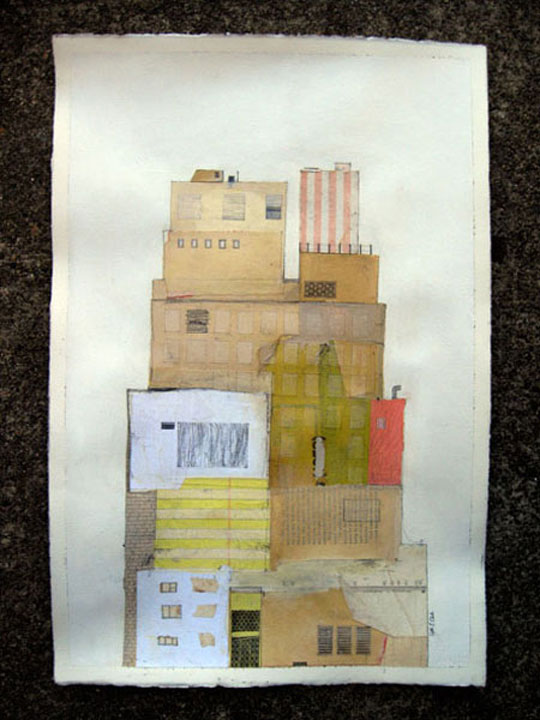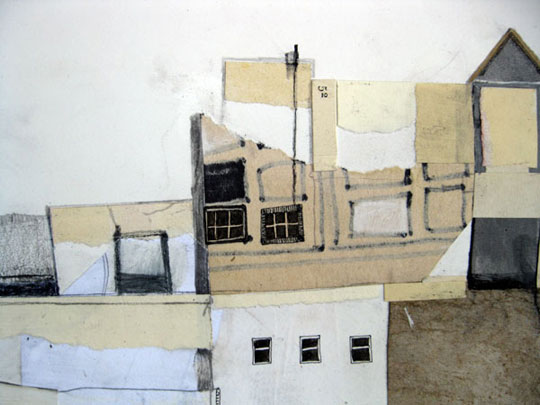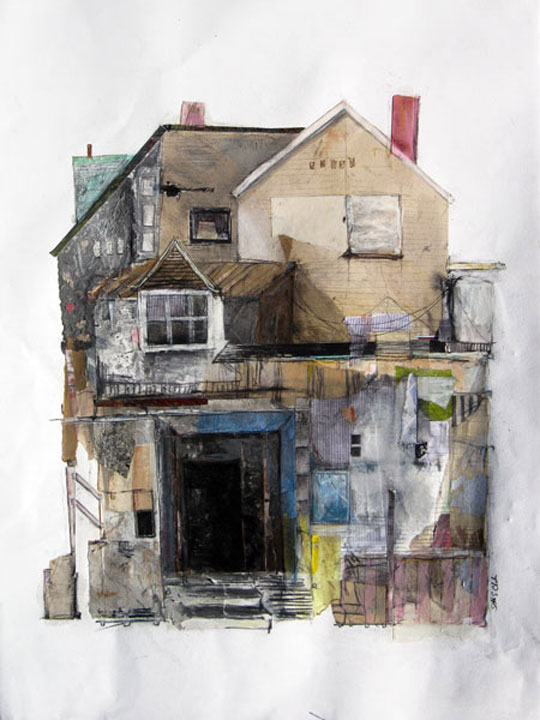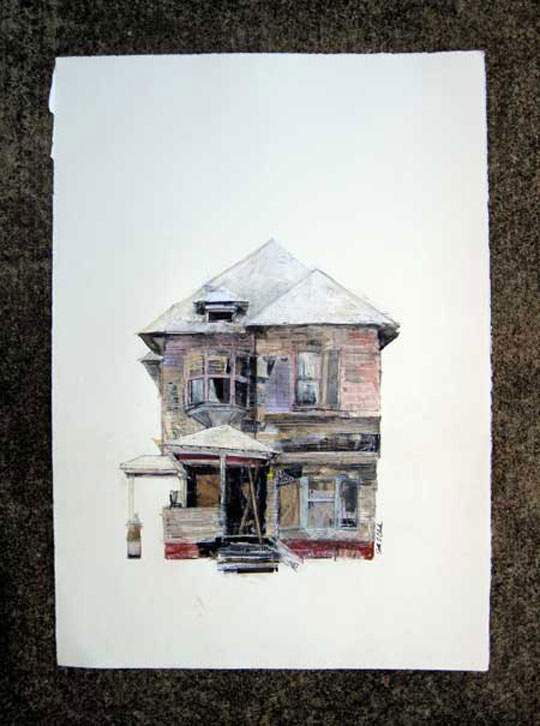
I first became acquainted with the work of Seth Clark when Julia Rothman wrote about his brilliant house flip book on her blog Book by it's Cover. When I clicked over to see the paintings/collages on his site, I was even more impressed. He's explored the idea of the ways buildings, particularly homes, age from several angles, many times maximal with layers upon layers of collaged elements, but sometimes quite minimal and restrained, like his flip book; but he always manages to say something new about the spaces in transition.
I think especially after being a part of two renovation projects his work speaks to me. The connection between space and inhabitants seems more real than it ever has before. As we've renovated our current home, we've collected the stories our neighbors have shared who've been here decades (even generations).
There are the glory day stories; in our case, when the house belonged to a couple named Bud and Ellie who lived here into their nineties after Ellie had been born in the home around 1880. Everyone likes to talk about how meticulous a house keeper Ellie was, sweeping the front porch almost daily at 90 years old (I've got no excuses!), their fancy victorian furniture, and their grape trellised path to the garden. After they died, the house was rented for decades and severely declined. So of course, there are the stories of brokenness, not only shared by neighbors, but clearly evident on every wall of the space itself when we first purchased our home from fanny mae back in 2008. As we proceeded with the renovation, mixed with our hope for our home's renewal, there was also sadness for the adversity the previous inhabitants had obviously felt, and though we never knew them, a hope for healing in those lives too.





